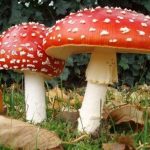 Our World
Our World  Our World
Our World  Movies and TV
Movies and TV The 10 Coolest Stars to Set Sail on The Love Boat
 History
History 10 Things You Didn’t Know About the American National Anthem
 Technology
Technology Top 10 Everyday Tech Buzzwords That Hide a Darker Past
 Humans
Humans 10 Everyday Human Behaviors That Are Actually Survival Instincts
 Animals
Animals 10 Animals That Humiliated and Harmed Historical Leaders
 History
History 10 Most Influential Protests in Modern History
 Creepy
Creepy 10 More Representations of Death from Myth, Legend, and Folktale
 Technology
Technology 10 Scientific Breakthroughs of 2025 That’ll Change Everything
 Our World
Our World 10 Ways Icelandic Culture Makes Other Countries Look Boring
 Our World
Our World 10 Ways Your Christmas Tree Is More Lit Than You Think
 Movies and TV
Movies and TV The 10 Coolest Stars to Set Sail on The Love Boat
 History
History 10 Things You Didn’t Know About the American National Anthem
Who's Behind Listverse?

Jamie Frater
Head Editor
Jamie founded Listverse due to an insatiable desire to share fascinating, obscure, and bizarre facts. He has been a guest speaker on numerous national radio and television stations and is a five time published author.
More About Us Technology
Technology Top 10 Everyday Tech Buzzwords That Hide a Darker Past
 Humans
Humans 10 Everyday Human Behaviors That Are Actually Survival Instincts
 Animals
Animals 10 Animals That Humiliated and Harmed Historical Leaders
 History
History 10 Most Influential Protests in Modern History
 Creepy
Creepy 10 More Representations of Death from Myth, Legend, and Folktale
 Technology
Technology 10 Scientific Breakthroughs of 2025 That’ll Change Everything
 Our World
Our World 10 Ways Icelandic Culture Makes Other Countries Look Boring
10 Fascinating Examples of Animals Ingesting Human-Style Drugs
Animals often come into contact with substances used as human drugs, leading to some intriguing and unexpected behaviors. From caterpillars using nicotine for defense to sheep grazing on cannabis, these interactions showcase the fascinating ways animals can be affected by human drugs.
As human activities introduce various chemicals into the environment, animals are inadvertently exposed to these substances. These encounters can lead to unusual behaviors, providing insight into the adaptability and resourcefulness of wildlife. While some interactions are accidental, others involve animals deliberately seeking out these substances for their effects.
Understanding these behaviors sheds light on animal ecology and underscores the broader impacts of human activities on wildlife. This list presents ten intriguing examples of animals using human drugs, offering a glimpse into the unexpected and sometimes amusing ways animals interact with their environment.
Related: Top 10 Animals with Strange Mating Rituals
10 Nicotine Defense in Caterpillars
Tobacco hornworm caterpillars have developed a unique way to protect themselves from predators by consuming nicotine-rich tobacco plants. Researchers from the Max Planck Institute for Chemical Ecology found that these caterpillars can sequester nicotine and use it defensively. When threatened, they release puffs of nicotine-laden breath, deterring predators like spiders with this toxic halitosis cloud.
This fascinating adaptation showcases how the caterpillars turn the plant’s chemical defenses into their own survival tool. By repurposing the nicotine, they can ward off threats effectively, illustrating the complex interactions between plants and herbivores. Studying such unique adaptations can highlight the importance of understanding plant-animal interactions and their ecological impacts, inspiring new approaches to pest management and conservation.[1]
9 Eucalyptus-Induced Lethargy in Koalas
Koalas are famous for their prolonged periods of sleep, often resting up to 20 hours a day. This behavior is primarily due to their diet of eucalyptus leaves, which contain toxic compounds. These compounds require significant energy to detoxify, contributing to the koalas’ lethargy. The unique microbes in their digestive system help break down these harmful compounds, allowing koalas to safely consume the otherwise poisonous leaves.
Humans, however, cannot safely ingest eucalyptus. Eucalyptus contains eucalyptol, also called cineole, an organic compound that is toxic in high doses. Nevertheless, humans have used eucalyptus leaves and oils for their medicinal properties. Eucalyptus oil is known for its antifungal and antiseptic qualities and is commonly used in remedies for coughs, colds, and chest infections. Plus, eucalyptus tea contains a safe amount of eucalyptus oil.[2]
8 Cannabis and Sheep
In a bizarre turn of events, a flock of sheep in Thessaly, Greece, began exhibiting strange behaviors after consuming 220 pounds (100 kg) of cannabis from a greenhouse. The extreme weather conditions had destroyed their usual grazing areas, leading the sheep to seek out the remaining crops. Once inside, they devoured what was left of the medicinal cannabis plants, causing significant damage to the crop.
The shepherd reported that the sheep began displaying unusual behavior after returning from the greenhouse. They were observed jumping higher than goats, a behavior not typical for sheep. This incident provided a unique insight into how THC, the psychoactive compound in cannabis, can affect livestock behavior, leading to hyperactivity and other changes.
This unexpected exposure to cannabis highlights the broader implications of human drugs on wildlife. While the sheep did not actively seek out the cannabis, its presence in their environment had a notable impact on their behavior. This case underscores the need to consider how agricultural practices and extreme weather events can lead to unintended interactions between livestock and human drugs.[3]
7 Caffeine Buzz in Goats
Goats have been known to munch on coffee plants, which contain caffeine, a potent stimulant. The historical discovery of coffee is attributed to Ethiopian goats that became unusually lively after eating coffee berries. Observers noted that the goats displayed heightened energy levels, jumping and frolicking more than usual. This behavior intrigued local herders and eventually led to the use of coffee by humans.
When goats consume coffee berries, the caffeine acts as a stimulant, increasing their alertness and activity. This natural experiment in the Ethiopian highlands provides insight into the effects of caffeine on animals. The goats’ energetic behavior after consuming the berries showcased the stimulant properties of caffeine long before humans began to drink coffee for its invigorating effects.
This fascinating interaction highlights the impact of naturally occurring substances on animal behavior and the serendipitous discoveries that can arise from observing wildlife.[4]
6 Methamphetamine in Waterways Affecting Trout
Recent studies have revealed that brown trout exposed to traces of methamphetamine in waterways show signs of addiction and withdrawal. These fish, found in contaminated rivers, exhibit significant behavioral changes due to the presence of the drug. Methamphetamine contamination typically occurs through wastewater discharge, affecting aquatic ecosystems and the species within them.
The addiction alters the trout’s natural behaviors, making them more lethargic and less responsive to stimuli. This can disrupt their feeding and mating habits, ultimately impacting the broader ecosystem. The presence of such drugs in the environment highlights the need for improved wastewater treatment and environmental protection measures to safeguard wildlife.
Understanding the impacts of pharmaceutical and illicit drug pollution on aquatic life is crucial for developing effective conservation strategies. This case reveals the broader implications of human activities on ecosystems and the urgent need for sustainable practices.[5]
5 Cannabis Treatments for Zoo Animals
Cannabis is increasingly being used to treat various ailments in zoo animals, including inflammation, pain, anxiety, and stress. Veterinarians have successfully administered CBD and THC to a range of species, from elephants and lions to ferrets and parrots. For example, Nidia, an Asian elephant with chronic foot problems, showed significant improvement in appetite and mood after being treated with CBD, helping her gain weight and reduce pain.
The use of cannabis in veterinary medicine, while promising, faces challenges such as legal restrictions and a lack of comprehensive research. Nonetheless, veterinarians worldwide are advocating for more studies and regulatory changes to integrate cannabis into animal care. This approach holds potential for improving the health and well-being of many animals suffering from chronic conditions.[6]
4 The Evolution of Pet Medications
Veterinary medicine is increasingly mirroring human healthcare, with new treatments emerging for pets that closely resemble human medications. Companies like Zoetis are leading this charge, developing innovative drugs to address various pet health issues. For instance, Zoetis recently introduced Librela, a monoclonal antibody treatment for osteoarthritis pain in dogs, marking a significant advancement in animal healthcare.
This shift is driven by a growing recognition of pets as family members, leading to higher demands for advanced treatments. Veterinarians now use medications such as CBD and THC to manage pain, anxiety, and other conditions in pets, demonstrating the crossover between human and animal medicine. This trend highlights the importance of continued research and development to improve the quality of life for pets.[7]
3 Alcohol-Soaked Fruit and Vultures
In Watertown, Connecticut, a pair of black vultures were found intoxicated after consuming alcohol-soaked fruit from a dumpster. The birds were discovered by local animal control, appearing unable to stand and showing signs of severe disorientation. They were taken to A Place Called Hope, a rehabilitation center for birds of prey, where the staff initially feared they might be suffering from poisoning or avian influenza. However, after thorough examinations, it was determined that the vultures were simply drunk.
The incident occurred on a street lined with bars and restaurants, making it likely that the vultures accessed dumpsters filled with discarded cocktail fruits and meats. Christine Cummings, the director of A Place Called Hope, noted that the birds were in rough shape, exhibiting behavior akin to drunkenness, such as stumbling and flailing. After receiving fluids and a safe space to recover, the vultures regained their balance and composure.
This unusual case highlights the broader issue of how human waste, particularly food waste, can impact wildlife. It underscores the need for secure waste disposal practices to prevent animals from accessing potentially harmful substances. By understanding and addressing these interactions, we can better protect wildlife from the unintended consequences of human activities.[8]
2 Modern Medications for Pets
Veterinarians increasingly use medications similar to those for humans to treat pets. Non-steroidal anti-inflammatory drugs (NSAIDs) such as Previcox and Galliprant are commonly prescribed to manage pain in dogs, reducing swelling and stiffness. These medications, however, must be used carefully to avoid toxicity, as accidental ingestion can lead to severe health issues, including liver damage.
It’s crucial to avoid giving pets human medications like Tylenol or Ibuprofen, as these can be highly toxic and cause severe health issues, including liver damage and even death. If your dog ingests these human medications, it can result in symptoms like abdominal pain, vomiting, and lethargy, and in severe cases, it can be fatal. Therefore, pet owners should always consult a veterinarian before administering any medication.[9]
1 Sharks and Cocaine
In Brazil, scientists have observed a disturbing trend of sharks ingesting cocaine dumped by drug traffickers. When authorities close in, traffickers often dispose of their cargo in the ocean, leading to contamination of the marine environment. Sharks, known for their curiosity, end up consuming these substances, resulting in erratic and altered behaviors.
Researchers studying these “cocaine sharks” have noticed significant changes in their activity levels and social interactions. The sharks exhibit heightened aggression and unusual patterns of movement, raising concerns about the broader ecological impacts. This contamination not only affects the sharks but also poses risks to the entire marine ecosystem.
The presence of cocaine in the ocean underscores a severe environmental issue linked to human drug trafficking activities. Scientists emphasize the need for more research to understand the full impact on marine life and to develop strategies to mitigate this pollution. Addressing this issue is crucial for protecting marine biodiversity and ensuring the health of oceanic ecosystems.[10]








